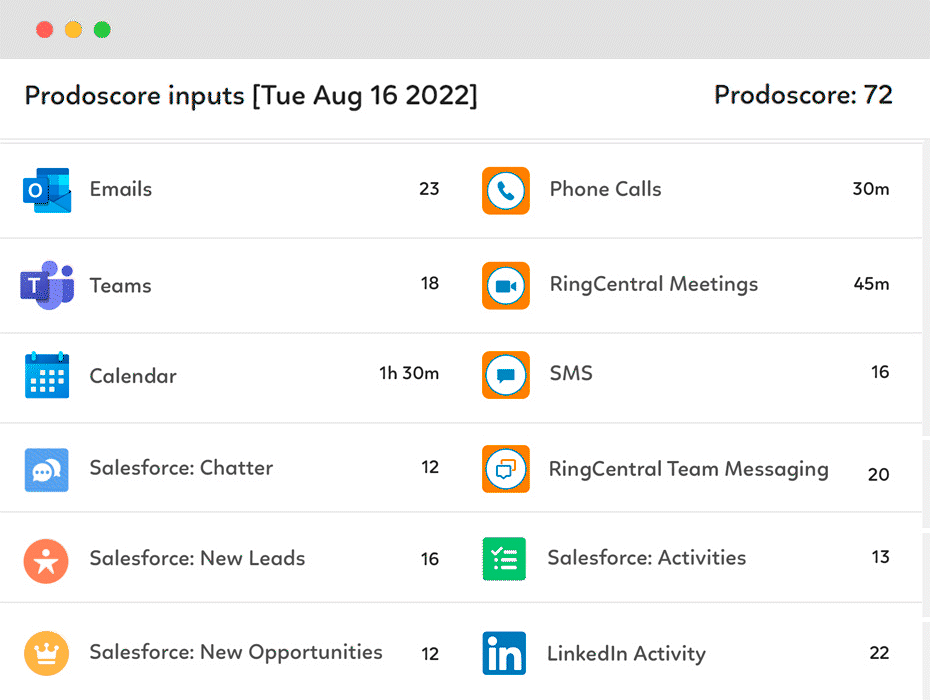Collaboration problems. We’ve all encountered them at some point and felt the resulting frustration. Perhaps you spent ages explaining the next stage of a project to a colleague, only to find they completely misunderstood your intentions? Maybe the collaboration tool you used wasn’t up to the job and created a substandard experience for the whole team where miscommunication abounded?
As a company that’s helped many customer service teams communicate and collaborate better with their customers, we’ve come across pretty much every common problem businesses encounter. And we’re here to help you overcome them.
In this article, we’ll use our many years of experience to walk you through everything you or your project managers need to know, including how to increase and improve workplace collaboration.
Today, we’ll talk about:
- The challenges of collaboration
- Is too much collaboration a bad thing?
- What is “good” collaboration?
- The advantages of good collaboration
- Common workplace collaboration problems
- Tools to help solve collaboration problems
What are some challenges of collaboration?
A lack of communication
This is what happens when collaboration goes wrong. Unfortunately, there’s a chance that poor communication or misunderstanding can happen whenever we interact with others. It’s easy for team members to overestimate their communication skills and neglect to check that others have understood them.
It’s also easy to assume that others have the same level of knowledge as you. This can lead to the omission of technical or contextual details, leading to confusion.
Good collaboration involves two-way communication: listening as well as speaking. It’s all about sharing your message clearly (multiple times if necessary), listening to verify understanding, and adapting your approach or plan to the feedback you’ve received.
Insufficient planning
Lack of collaboration in the workplace can often be attributed to insufficient planning. Planning helps to create a shared vision, which is a vital ingredient of company collaboration. Without this, there can be confusion about people’s roles and responsibilities, goals, and priorities.
A collaborative work example where planning is particularly critical is where there is a need to work with another team or business organization. Before any work starts, it’s vital to get buy-in across the board and align:
- Objectives
- Goals
- Resources
- Budget
- Scope
- Success criteria
- Risks or potential bottlenecks
This ensures that everyone is on the same page to avoid any costly mistakes.
Not having the right tools to use
Tools such as email and spreadsheets don’t encourage collaboration and can lead to people feeling isolated or “siloed.” Long email threads that almost oblige you to forget to copy someone in aren’t exactly conducive to a collaborative environment. This is an area where you really need to cut your team some slack and give them the right tools for the job.
It’s crucial to choose the right collaboration software for your business. Evaluate your needs carefully and think about functionality and team requirements before investing in a “best fit” solution.
If you’re already with RingCentral, this isn’t a problem you’ll have to worry about. Our all-in-one business communications solution lets you meet face-to-face, in real time, with lots of innovative sharing and collaboration features. Welcome to working together from anywhere with streamlined workflows.

Is too much collaboration a bad thing?
Collaboration is a good thing, right? Well, it turns out it’s a bit like a rich chocolate fudge cake, amazing in the right-sized portion but less great if you overindulge. Too much collaboration can cause organizational problems. It’s important that the costs involved with workplace collaboration methods, such as meetings, don’t outweigh the benefits.
Collaboration statistics gathered by LinkedIn Learning demonstrate that collaboration is one of the top five soft skills demanded by employers.
But, when is collaboration a bad idea? The answer to that is when it’s simply for the sake of it. When companies grow, they naturally become more complex. Each new dimension, such as reaching new geographical locations, increases the need for more collaboration between stakeholders. It can be easy to get stuck in an ever-increasing cycle of meetings that doesn’t leave time for actual work to be completed. In business, every moment matters!
Using a cloud-based collaboration platform, such as the one provided by RingCentral, makes it quick and straightforward to interact with team members with a handy all-in-one solution. Choose from phone calls, video chat, or instant messaging to best fit your individual requirements.
What is “good” collaboration?
The key aspects of good collaboration are developing practices and skills that enable you to work towards a common goal with others. Good collaborators communicate clearly, actively listen to others, respect the diversity of others, and take responsibility for any mistakes made.
Creating a judgment-free zone where ideas are shared is a great first step to good collaboration. Different people, objectives, and skill sets can lead to really effective idea generation.
The following are good company collaboration examples:
- Create both internal and external team groups.
- Share agendas and files before meetings.
- Collaborate live, checking off and assigning tasks, and making smarter use of time in meetings.
What are the advantages of good collaboration?
The value of collaboration is that when talented, motivated individuals work together on shared objectives, great results can be achieved. Read on to discover more advantages.
Increased knowledge and skills base
Collaborating contributes hugely to personal and professional development. It offers the opportunity to learn new things from the people you’re interacting with and broaden your expertise and technical know-how. Learning from each other comes naturally when tackling projects and briefs.
Strong, connected, and more efficient teams
A team that collaborates effectively is able to play to the strengths of every single member, from management to interns. Collaborating builds a tight and unique network that will help and trust each other, increasing camaraderie. Teams who collaborate become a community.
Online collaboration tools also allow remote team members to receive the same real-time and continual communication as colleagues. When you feel more connected, your morale and productivity improve as a result.
Innovation
Collaboration is all about fostering an innovative culture. Bringing together people from different backgrounds with different experiences into one team makes solving problems effortless and speedy. It increases both idea generation and creative thinking.
Improved customer experience
When people talk about examples of collaboration in the workplace, they tend to think about areas such as project management or marketing strategy. However, collaboration in contact or call centers is equally critical.
When people work together, problems and issues are resolved more swiftly and efficiently. This empowers customer service teams to provide a better experience and create happy and satisfied customers. And, we all know that happy and satisfied customers return time and time again and spread the word about your products or services.
5 common workplace collaboration problems
Collaboration issues in the workplace are common. Sometimes the very structures and dynamics that define your business can be problematic when it comes to effective collaboration. Below, we’ll examine some of the common challenges and move on to discuss how you can solve them.
1. The need for more structured guidance and leadership
This is all about organizational collaboration challenges. Teams need support to work collaboratively and productively. They need structure and the right processes to follow. If your organizational structure hasn’t been considered for a while, perhaps it’s time to dust off that plan and give it some thought?
There should be a clear reporting structure and career paths with “top-down” communication providing direction and purpose. Open communication and agile ways of working should be encouraged.
2. Lack of engagement and connection with teammates
Feeling connected is one of our basic human needs. It is, therefore, no surprise that when the connection between team members isn’t working, teams fail. While working from anywhere sounds amazing (and it can be), remote teams need to stay connected. This helps with engagement, motivation, and even self-esteem.
Business owners and managers must acknowledge the importance of each individual team member. They need to ensure that everyone feels included and provide the right collaboration tools for a truly connected experience. After all, no person is an island.
Providers of high-definition video and audio software, such as RingCentral, can help here. Great quality visuals and audio offer far better opportunities to observe facial expressions, tone of voice, and body language. This leads to a more engaged, “real,” and face-to-face experience.

3. Competitive barriers and different working styles
Internal competition can sometimes prevent collaboration and knowledge-sharing. When individuals are only concerned with furthering their career paths within a company, there can be a tendency towards information hoarding. Maybe this can be classified as a natural human behavior, but it isn’t exactly helpful. Leaders must make it clear that the goals of the group take precedence over those of the individual.
Similarly, staff will all have different approaches when it comes to the style of working they adopt. The key to these issues is acknowledging everyone’s individual strengths and working to build trust and break down barriers within your team. It is helpful to provide a collaboration tool that offers multiple options for different approaches to getting things done.
4. Insufficient communication
Lack of communication in teams can lead to serious problems. It can cause low productivity and, at its most extreme, even lead to employees feeling excluded.
Business owners and managers should ensure that they lead by example and organize regular opportunities for staff to voice concerns and address issues. Regular checks should also be made to ensure that all teams within an organization are working towards the same common goal.
5. Collaboration tools that don’t meet the needs of your business or aren’t being used properly
Your team will struggle to collaborate if they don’t have the right tools to do so. It’s an equally severe problem if they don’t know how to use them properly.
For effective collaboration, a unified platform for communication is necessary. RingCentral, for instance, puts all of your communication channels into one app, so your whole team can keep track of projects, conversations, and more:

There should be a clear and structured onboarding process that trains team members on using it, too. All business processes should be documented clearly to provide a helpful reference point.
Tools to help solve your collaboration problems
Let’s take a look at teamwork statistics in the workplace. In a 2020 survey, 74% of respondents believed that communication tools were an essential prerequisite for employees to be efficient. If you can’t communicate effectively, then collaboration is practically impossible.
There are now many digital tools available that will make collaborating much more manageable. An online collaboration tool is a platform where team members can work on, view, and edit tasks and projects simultaneously.
While there may be many platforms out there that claim to help us collaborate better, communicate faster, and simply get more done—how do you know which is the right one for your business?
Every business is unique, but as a general rule, you should be looking for a collaboration tool that is:
- An all-in-one solution to save employees jumping between applications. RingCentral combines messaging, video and phone, so you can share files, manage tasks, set up advanced call routing, send business texts, manage your voicemail, and switch from a call to a video meeting with one tap.
- A platform the whole team will love. RingCentral provides an intuitive user experience—it’s easy to use and simple to navigate.
- Secure—don’t underestimate the importance of this, particularly if your business operates in sectors with highly sensitive information such as finance or healthcare. RingCentral provides seven layers of security and 24/7 platform monitoring.
- Inclusive of great customer support on a 24/7 basis, given that business is conducted increasingly across different time zones and outside of the traditional 9-to-5 hours. RingCentral accounts for this by offering a variety of support methods at all hours across the globe.
- Cost-effective and scalable—it’s vital to choose features that will help facilitate future growth. RingCentral’s flexible architecture affords it instantaneous scalability enabling it to handle unforeseen spikes in activity—expansion efforts never affect our customers’ phone service.
- Full of features to suit your individual business needs.
- Able to integrate with your existing software, such as your CRM. RingCentral allows you to discover, install, and build integrations to eliminate communication silos, simplify communications, and drive productivity.

Overcoming collaboration challenges will set your business up for success
Collaboration problems can result in delayed schedules or budget overruns, meaning dissatisfied customers may take their business elsewhere. And, that’s before we even start to look at the adverse effects on team motivation and effectiveness. This is clearly a matter that must be addressed.
If you’re still wondering how to get your employees on board, why not send a collaboration survey out and get their take on the subject? Collaboration survey questions could include topics such as preferred methods of communication, management approachability, and opinions of current tools in use.
Overcoming the challenges of team collaboration can bring out the best in your workforce, leading to business success. Solid team foundations, clear processes, and organized planning are all required for this. However, optimizing this invaluable activity demands the adoption of a modern collaboration platform. With the right tools in place for your business, you will truly be set for success.
Originally published Jul 21, 2022, updated Jul 22, 2024





